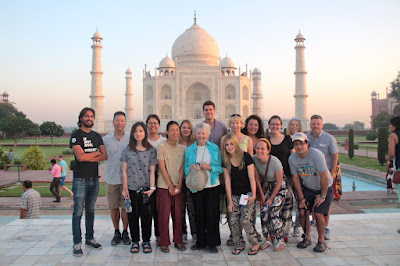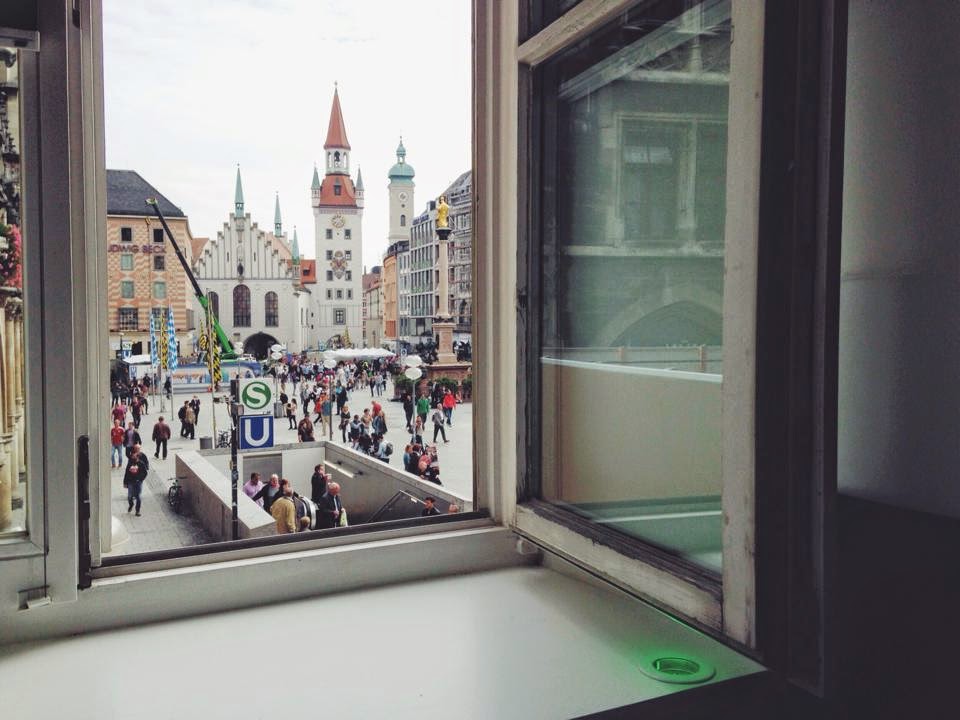7:30 a.m.

We booked it through the automatic doors — panting breaths serving a musical backdrop to our dramatic arrival at the Cusco airport.
Nathan and I skidded to a stop at the airline gate.
“Checking in,” I said. The agent eyed my confirmation email. She adjusted her gaze, scrutinizing the two of us before jabbing her finger at the departures display.
“Checking in,” I said. The agent eyed my confirmation email. She adjusted her gaze, scrutinizing the two of us before jabbing her finger at the departures display.
Cusco to Lima. Takeoff: 8:30 a.m.
“It's 7.30 a.m. Sorry,” she said. Her tone suggested all but an apology. “The gate has closed.”
I should preface, I’ve got a portfolio of travel mishaps.
I’ve been a day late for a flight. I’ve gotten on a train bound to the wrong city. But this, I swear, was neither my nor Nathan’s doing. We’d arrived at the airport an hour before the flight was scheduled to leave. The Cusco airport mandating presence a good 90 minutes pre-departure fell way beyond our purview.
I’ve been a day late for a flight. I’ve gotten on a train bound to the wrong city. But this, I swear, was neither my nor Nathan’s doing. We’d arrived at the airport an hour before the flight was scheduled to leave. The Cusco airport mandating presence a good 90 minutes pre-departure fell way beyond our purview.
My mind kicked into full gear. Credit card out, we could just pay for another flight.
Smile, we could sweet talk our way through.
Cancel all plans, we could stay in Cusco, forever.
“What do you suggest?” I said, Nathan interjecting, “Are you sure?” he asked the agent.
Her fingernails clinked ferociously onto her keyboard. A drumbeat of uncertainty.
“Ok,” she said.
Ok?
“We’ll make an exception—reservation number please.”
In the history of anticlimactic successes, this was it. It took Nathan simply asking again for our access to the gate to swap from a hard no to a simple, yes.
The adventure of getting to the airport had begun with an Uber that never showed, which led us to a stranger who guided us to his friend who shuffled us into a car that appeared around the bend to take us to the airport. We broke all the cardinal traveler safety rules to make it to our flight.
But we made it to the airport and onto our plane. I’ll credit it all to pure, sheer luck.
Days 1 - 8
Nathan, one of my oldest and closest sleepaway camp friends, and I had talked up an international adventure for years.
Our timing never aligned, until 2017.
Our timing never aligned, until 2017.
The two of us spent a week canvassing the Cusco to Machu Picchu circuit (Lima > Cusco > Sacred Valley > Cusco > Sacred Valley > Ollantaytambo >
There were “the Lindas”—the mother of two American guys we sat across from on the train from Cusco to Aguas Calientes, the town closest to Machu Picchu. Mom was named Linda, as were her two, new girlfriends on their group trip.
There were Michelle and Garrit, another couple of friends we met while hiking Machu Picchu and then had dinner with our last night in Cusco. She was a model-singer-actress, he a tech developer in the midst of a nasty lawsuit with an ex-girlfriend.
There were Michelle and Garrit, another couple of friends we met while hiking Machu Picchu and then had dinner with our last night in Cusco. She was a model-singer-actress, he a tech developer in the midst of a nasty lawsuit with an ex-girlfriend.
And there was my 11-year-old comrade, whom I sat next to during the collectivo ride from the Ollantaytambo train stop back to Cusco at the tail end of Nathan’s and my week away.
 |
| Linda, her sons and us at the top of Montana Machu Picchu. |
 |
| Desperate times call for desperate measures. Nathan and I curled up on the floor- and later the chairs- of the Lima airport while waiting for our early morning flight to Cusco. |
 |
| Dinner in Cusco with Michelle and Garrit, another couple of friends we met on our hike up Machu Picchu's Montana. |
****
Day 6 - Ollantaytambo to Cusco, Peru
5 p.m.
5 p.m.
We were cramped.
Four passengers per row, an inch—if that—available by our feet for bags in our collectivo, or shared minivan.
Four passengers per row, an inch—if that—available by our feet for bags in our collectivo, or shared minivan.
I sat in the front, my 11-year-old new friend sandwiched between me and the driver.
 |
| Smushed in our collectivo headed back to Cusco. |
In his broken English and my relatively non-existent Spanish, I understood that he had just closed out the three-day Inca trail hike, the quintessential trek between Cusco to Machu Picchu. He’d befriended tourists from Spain. Spain was now top of his travel bucket list.
The van hummed as it mazed through the winding roads linking Ollantaytambo to Cusco. I traced the mounds of earth clumped across the terrain.
Veins ridged down the mountainscape, the indented grooves creating sharp color changes between kaki slopes and darkened shadowed in-betweens. The mountains towered over the villages we passed, the colors extraordinary against the piercing blue sky speckled by the cotton wisps of clouds hugging the mountaintops.
Veins ridged down the mountainscape, the indented grooves creating sharp color changes between kaki slopes and darkened shadowed in-betweens. The mountains towered over the villages we passed, the colors extraordinary against the piercing blue sky speckled by the cotton wisps of clouds hugging the mountaintops.
The driver turned the knob on the radio, gentle Peruvian music filling the quiet interlude. My new friend’s head bopped against my arm. He’d fallen fast asleep.
 |
****
Day 6 - Cusco, Peru
7 p.m.
7 p.m.
I pointed to the address for our evening’s Airbnb.
“Seis soles,” the taxi driver said, eyeing the collectivo that had just dropped us off in Cusco’s central square.
“Cuatro soles,” I said firmly. Nathan said I’m good at negotiating.
“Seis,” the taxi driver responded resolutely.
Then again, perhaps not.
The movement of the city slowed as the taxi chugged away from the hub of Cusco’s tourist center and into the city’s residential pockets. It was our last night in Cusco before flying out to Lima the following morning.
In all, the car stopped three times.
Once as I scurried out for a photo with two alpacas and their three owners waiting for me, my camera and my donation.
The second time at what we thought was our Airbnb. I, trusting the driver to know best, gathered my belongings. Nathan, the savvier traveler among us, paused. This, he said, looked like a hostel, not the home the Airbnb owner had described. I left Nathan to figure it out, stepping out from the car to meander to the road’s edge for a view of Cusco below. The lights looked like feather dust, twinkling across the otherwise stillness of the city.
I inhaled deeply, feeling the air constrict at the top of my lungs. We were back in Cusco—back in the city where the week vacation had begun. Where the altitude sickness of our first few days had forced us to pause, to let go and give in to Pacha Mama’s plan for us.
There’s no predicting how Cusco’s altitude will impact you. For us, it drained us of all energy, leaving us out of breath merely walking down the cobbled stones from our hotel.
The breath is a powerful force, as precious as it is innate. The breath centers, the breath fires and, at times, the breath mandates acceptance of life’s inevitable pauses. But it’s in those pauses do we step back, do we adjust our footing and renew our approach to life in the moment.
And the breath did acclimate over the week as we eased our way toward Machu Picchu and through our hikes up Montana and Huayna Picchu. I’d instituted a routine of setting daily intentions. The practice helped focus us on presence in the present, of appreciation for the slithers of goodness that came no matter where the breath would take us that day.
I could hear Nathan in the background thanking the hostel owner. The hostel, I gathered, was not our final destination.
I tore myself from the view, settling back into the taxi as we continued onward, eventually stopping at a home. Our taxi driver watched us knock tentatively on the door. I breathed in. A breath of hope that this, indeed, would be the right destination. A breath of uncertainty: neither of us knew in that moment the scurry that would ensue the following morning in our haste to catch a flight that we would almost miss.
The lock clicked; a woman in an oversized flowery dress opened the door.

















































